Introduction: In this article, Gena Philibert-Ortega describes a popular form of entertainment and education for our ancestors: stereoscopes viewing stereograph cards. Gena is a genealogist and author of the book “From the Family Kitchen.”
What entertainment formats existed in your ancestor’s time? One option for 19th and 20th century families that provided entertainment, as well as the ability to travel “virtually” and to learn about the world, was a stereoscope and stereograph cards.
Stereographs are cards with two near-identical images mounted on a cardboard card that can be viewed through a stereoscope.
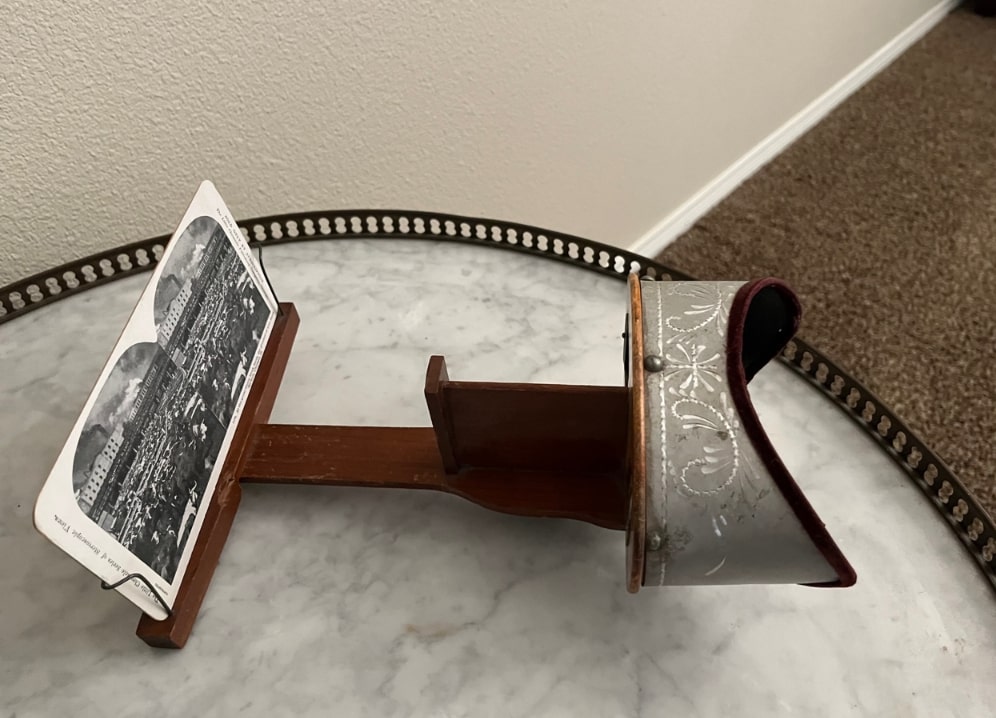
A 1920 Trenton newspaper (see below) explained that the stereograph:
Differ[ent] from the regular photograph, the stereograph is made on the principle of the two-eye vision. The lens in an ordinary camera is single, giving the one-eye vision, while the stereograph is made by a camera having two lenses, set the same distance apart as a person’s two eyes. This produces two distinct photographs, which, when looked at through the stereoscope, give a perfect space for eye and mind, not merely a suggestion of a space as in the photograph. Thus, the spectator is given a real experience of seeing the object in life size. (1)

Uniform in size and shape, stereographs first appeared in 1850, but they were most popular between 1870-1920. According to the Library of Congress:
“By 1860 both amateur photographers and publishing firms were making stereographs. The major stereo publishers sold their views by mail order, door-to-door salesmen, and in stores.” (2)
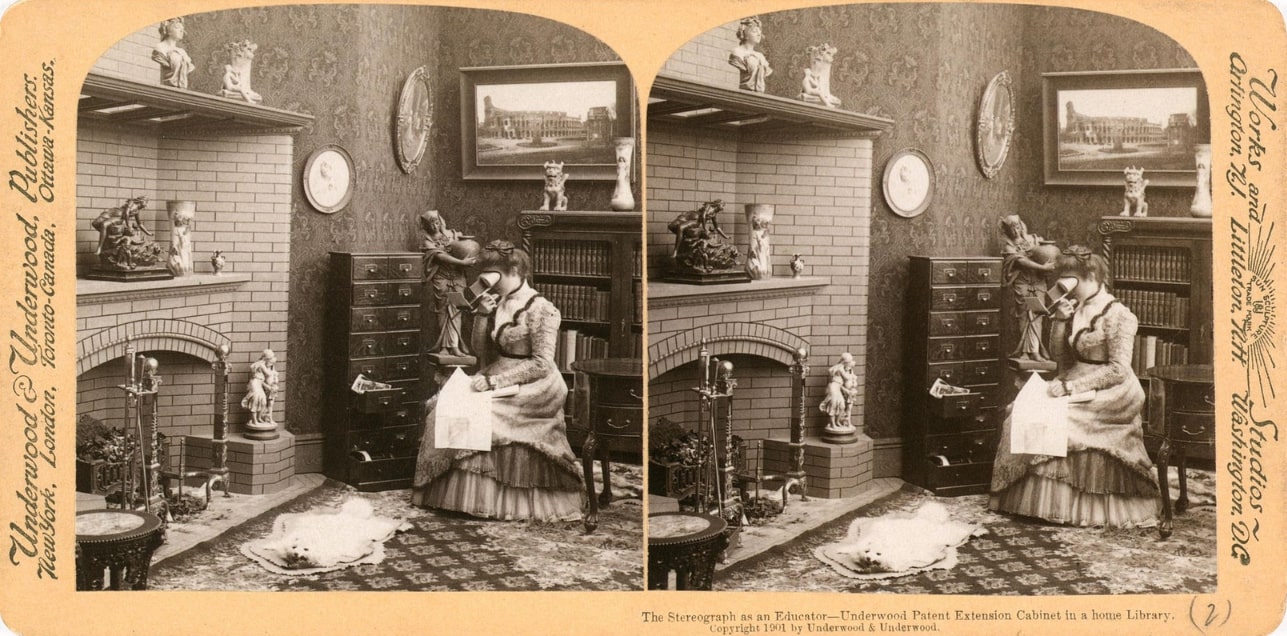
Stereographs came in sets photographed by professionals or could be created with a desired image. This advertisement from 1867 in Coldwater, Michigan, for J. Tripp’s Photograph Rooms advertised “Stereoscopic views of residences made to order… Also, for sale, Stereoscopic views of Cemetery, Churches, &c.”
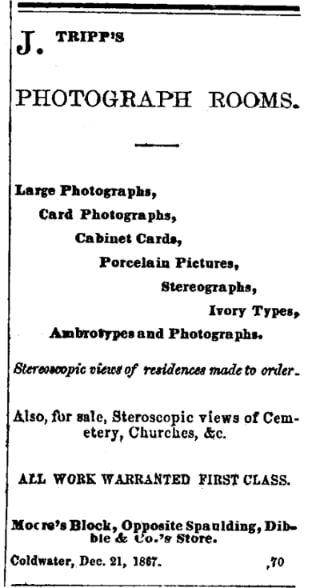
Stereograph cards depicted all kinds of places, people, events, and activities. Stereographs documented historical events, the casualties of war (Civil War and World War I), and even the inner working of Sears, Roebuck & Company. (3) While some were comedic, others were decidedly not. Just like today’s photographs, movies and television shows, stereograph cards could entertain but also educate about a world that was beyond our ancestor’s city or town.
According to the Library of Congress:
“Stereographs were collected by many middle-class families in the late 19th century. People acquired stereographs of tourist sites they had visited, as well as exotic locales that they would only experience through the wonder of the stereoscope. Viewing stereographs was a common activity, much like watching television or going to the movies today. Stereo views were also used as an education tool in classrooms.” (4)
One example of this can be found in an article published in 1920 in the Trenton Evening Times that reported the New Jersey State Museum had added a thousand stereoscopes to be loaned out, and that these items were “particularly beneficial for the students studying geography, history, geology, nature study and the many industrial subjects in school.”
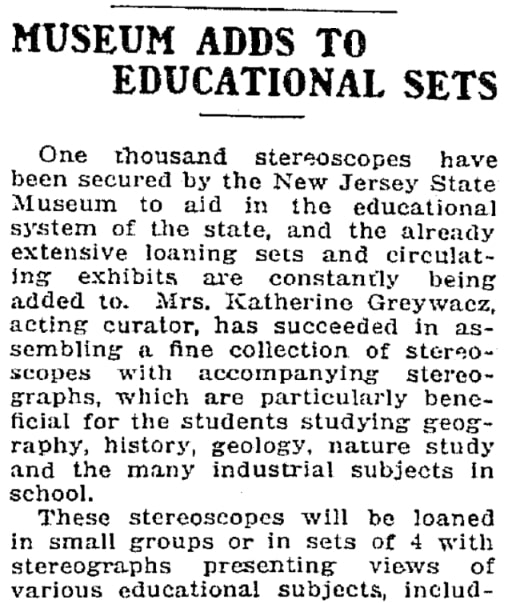
As stereoscopes became more affordable, they provided middle-class families with an entertainment option enjoyed at home. In this 1909 National Tribune advertisement, a stereoscope is offered as a premium with an annual newspaper subscription. Those who are dissatisfied with the stereoscope could return it for a 75-cent refund, leaving the cost of the newspaper subscription at 50 cents.
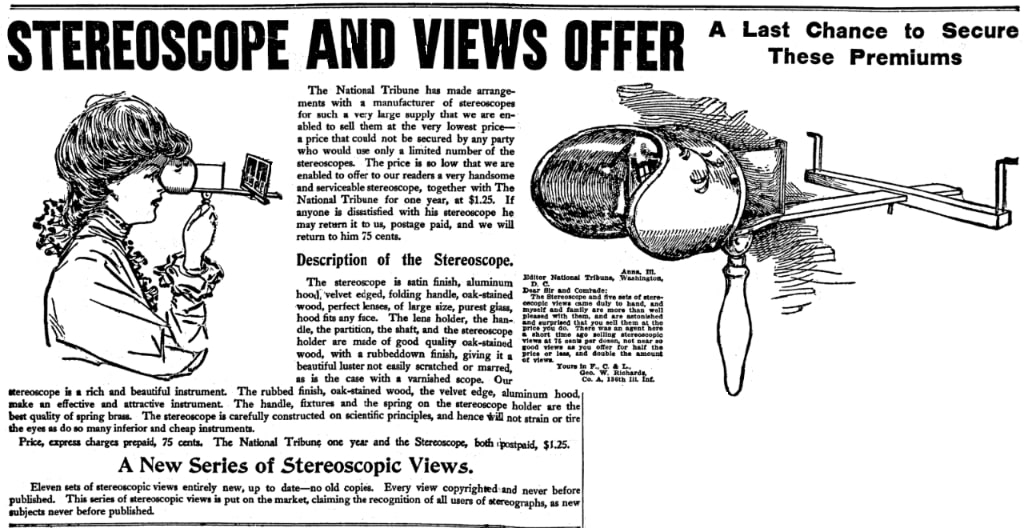
In addition to the stereoscope, subscribers could purchase any number of card sets including views of battleships, the 1906 San Francisco earthquake, and the Panama Canal, as well as comic views of pets, among others.
Peering into History
Today, stereograph cards are more of a collectible than a virtual look at the world, due to technological gains, but they can provide us with a glimpse at our ancestor’s life and what they may have seen.
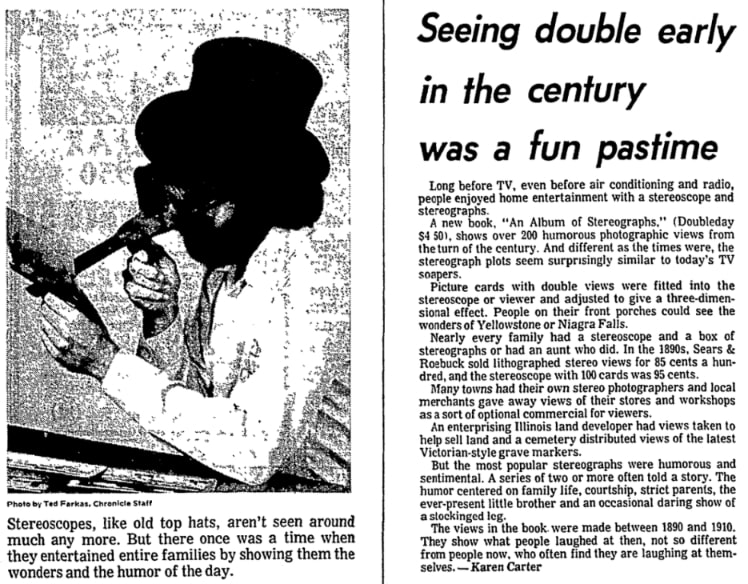
You can still buy stereoscopes and stereograph cards at antique stores and online auction sites. Collections of the cards can be found on websites such as the American Antiquarian Society and the Library of Congress. The American Antiquarian Society has some of their collection digitized. Keep in mind that this collection includes the Civil War era and depicts the dead.
The Library of Congress has a collection of approximately 52,000 stereograph cards, many of which are digitized and available to view online. The New York Public Library Digital Gallery also has a collection.
Do you own a stereoscope or stereograph cards? Did you inherit them from your family? Share your collection in the comments below.
Explore over 330 years of newspapers and historical records in GenealogyBank. Discover your family story! Start a 7-Day Free Trial
Note on the header image: a common Underwood & Underwood stereoscope. Credit: Bubba73; Wikimedia Commons.
____________________
(1) Trenton Evening Times (Trenton, New Jersey), 3 August 1920, page 8.
(2) “Stereograph Cards,” Library of Congress (https://www.loc.gov/pictures/collection/stereo/background.html#format: accessed 29 August 2022).
(3) The SearsRoebuck stereograph cards can be viewed on the Chicagology blog at https://chicagology.com/homanave00/
(4) “Stereograph Cards,” Library of Congress (https://www.loc.gov/pictures/collection/stereo/background.html#format: accessed 29 August 2022).

I was lucky enough to be asked to scan and describe a collection of these for Historic Geneva in Geneva, NY. They are the Viewmaster (c) of their era:
https://nyheritage.org/collections/stereograph-card-collection-geneva
Thanks for sharing that collection Larry! I appreciate it.
I have a couple of them and several collections of cards. My favorite is the complete set of cards from the 1904 St. Louis Exposition. “Meet me in St. Louis, Louis, Meet me at the fair…”
What a great collection Kathy! I bet they are really interesting, and they provide a unique look at the Exposition.
The District of Columbia Public Library’s People’s Archive has placed a collection of its stereographs at https://digdc.dclibrary.org/islandora/object/dcplislandora%3Astereoview
Thanks for sharing that link Jerry. I appreciate it.